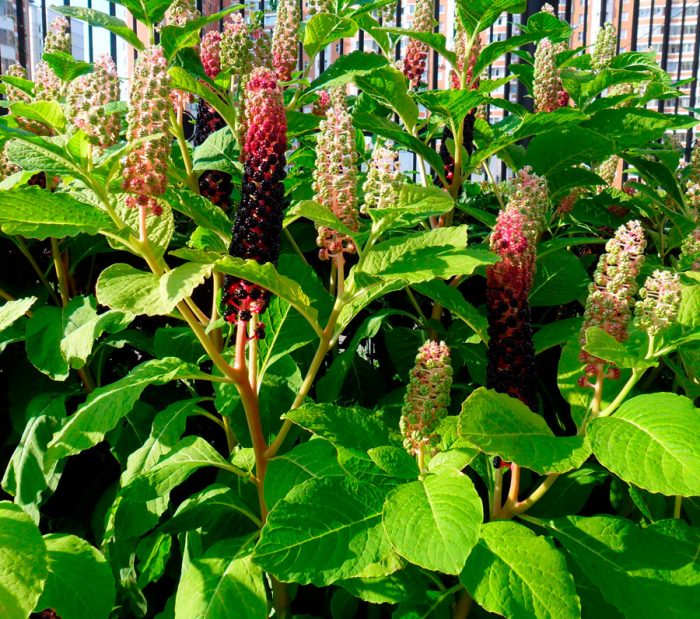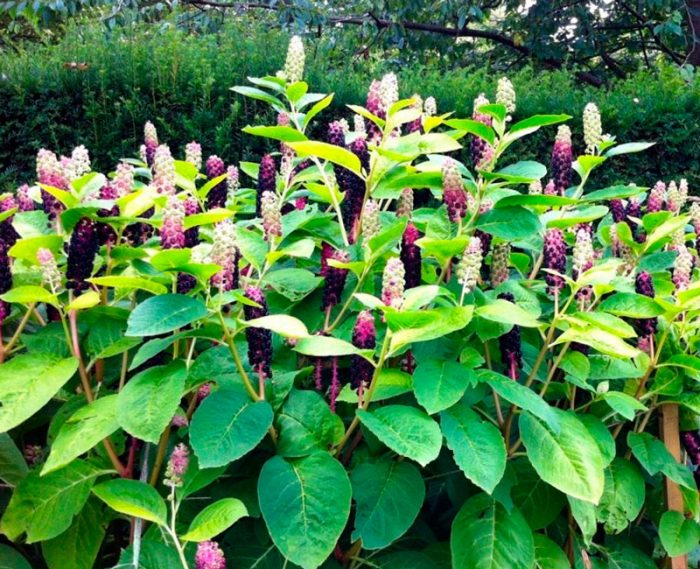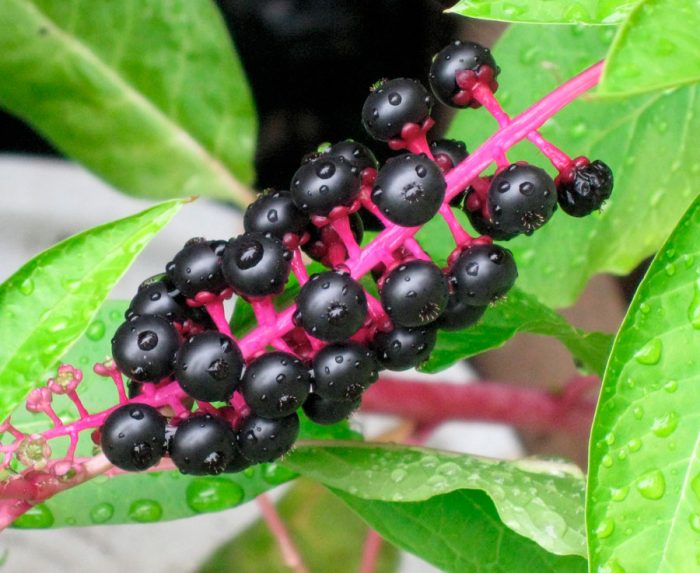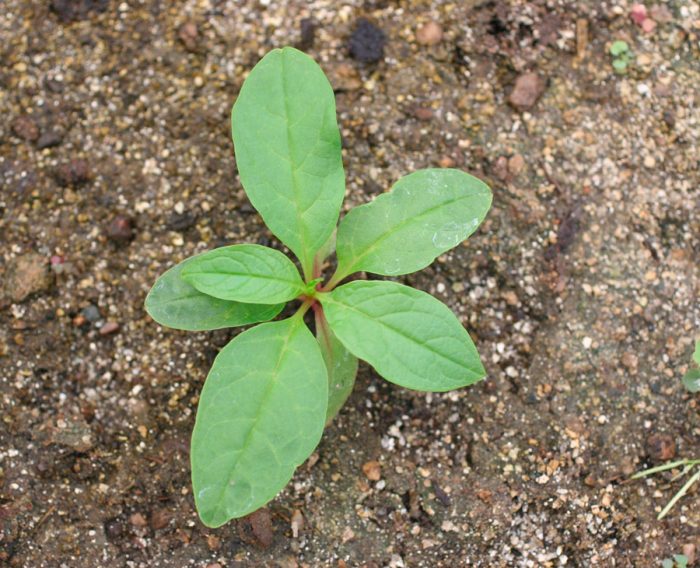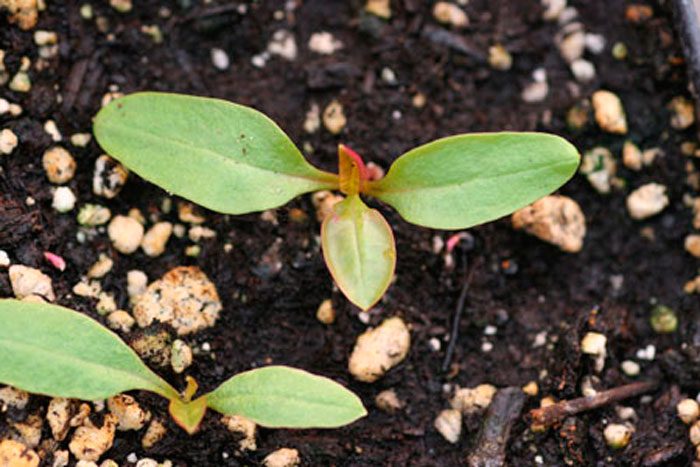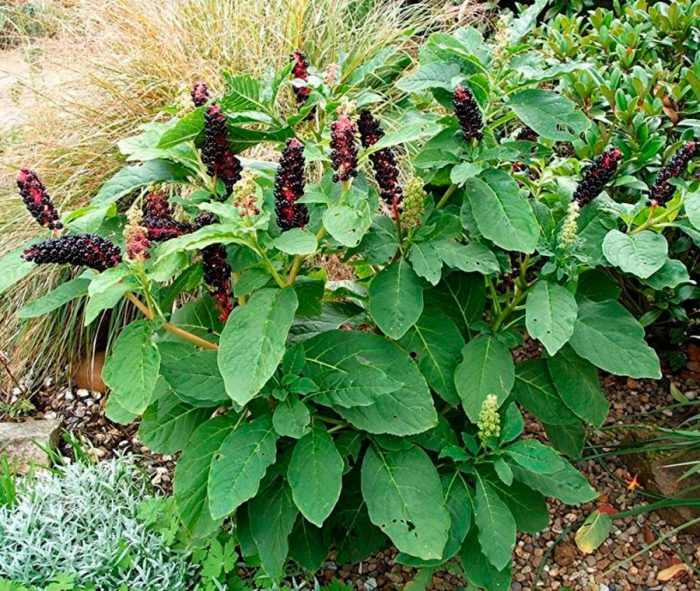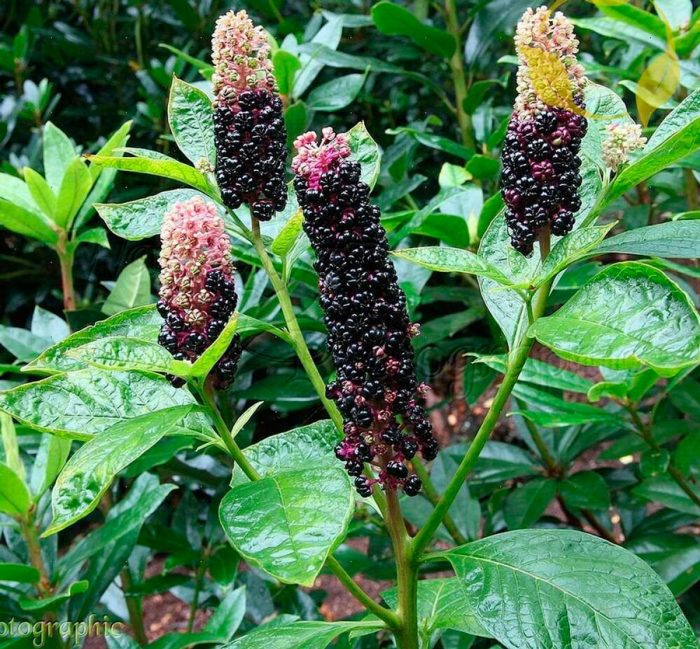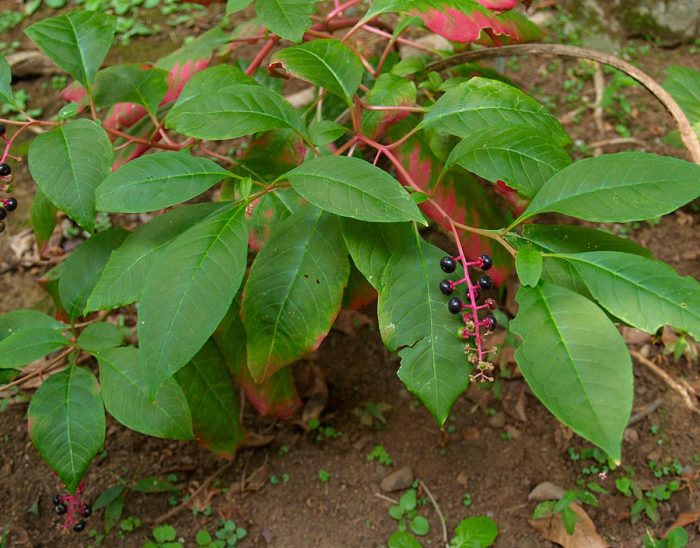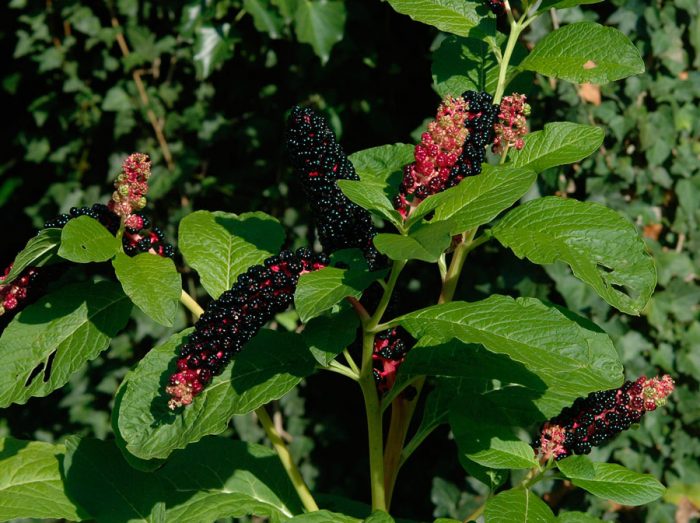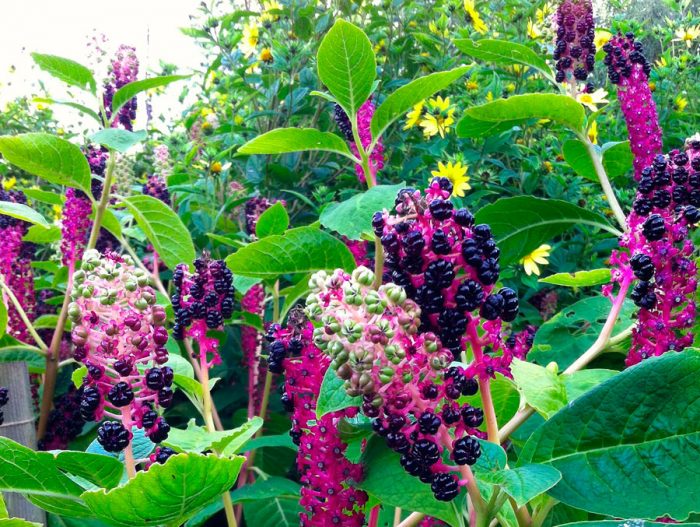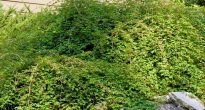Do you like spectacular chestnut blossoms, but you can't plant a tree in your garden? In this case, an unpretentious and contented spectacular plant Lakonos (phytolacca) can replace it. Despite the fact that it is not a powerful tree, the long stems of a vigorous shrub look quite impressive. The blooming lakonos is especially decorative: its inflorescences are outwardly similar to chestnut candles, and the fruits look quite original.
This perennial plant is distinguished by its unpretentiousness to growing conditions and undemanding care. Before flowering, it may seem that in front of you is just an ordinary weed, only very tall. However, the blooming phytolacca bush is highly decorative and becomes a real decoration of the garden. The plant also looks spectacular during the ripening of the fruit.
Popularly, this plant is also called kermes berry, or oily grass, or Jewish ivy. And in the scientific literature it is also called phytolacca.
Content
Features of the lakonos
Lakonos is a bushy, vigorous herbaceous shrub with strong and strong stems. In height, the shoots can reach about 200 cm, and as they grow, a light pink bark is formed on the surface of the branches. The plant is highly branching, so it is able to form a spectacular lush crown. Phytolacca is a rather powerful plant: it has not only tall, strong shoots, but also long leaf plates, which can reach about 0.3 m in length. Oval wide leaves have a pointed tip at the top. From spring to autumn, the foliage is colored green, but the young leaf plates have a more intense color. In autumn, the foliage takes on a crimson hue, which looks very beautiful.
Tearing off and rubbing the leaf plate between your fingers can give you an unpleasant smell. Therefore, experienced gardeners recommend admiring the beauty of the bush from afar.
Around mid-July, rather long (about 25 centimeters) peduncles appear on the bush. They consist of small white flowers and have the shape of an ear. Outwardly, the inflorescences are very similar to chestnut candles, but they are thinner.
The bushes fade in the last weeks of August, and then fruits form on them.They are small berries that are round and slightly flattened. Each fruit has ten lobules with seeds inside. At first, the fruits are pinkish, and when they are fully ripe, their color changes to dark purple (almost black). In the fall, branches with dark purple fruits and red foliage look very impressive. The berries stay on the branches until the very frost.
Phytolacca stands out for its uniqueness. On the one hand, this plant is a little dangerous, but on the other hand, it is useful. Lush inflorescences are considered an excellent honey plant for bees, but it is better to bypass the berries of the lakonos, as they contain poison. This plant is also used in alternative medicine, or rather, the roots of some species. They are believed to have antibacterial and wound healing effects.
This shrub is a perennial plant, however, in winter, there is a complete dying off of its stems. With the onset of spring, only the rhizome remains of the plant, which is a thick long rod. The roots go into the deep layers of the soil, where they calmly survive even severe frosts. In spring, the stems of the bush grow very quickly, while it starts up a young growth, which allows it to grow quickly.
Landing in open ground
Choosing a suitable site
When choosing the optimal place in the garden for the lakonos, it should be noted that this is a rather large plant. You also need to remember that this is a light-loving plant, so it needs a sunny area. In light shade, this shrub can also be grown, but in this case it will be much smaller than those shrubs that grow in the sun. If there is a lot of light, then the bush will grow tall, and the fruits will form on it much earlier and there will be more of them. You should also pay attention to the fact that this culture reacts negatively to drafts, so the site must be reliably protected from them. Young immature lakonos especially needs a calm and windless place. However, strong gusts of wind can also harm mature bushes, injuring their stems.
Pay attention to the quality of the soil on the site. It must be nutritious. For example, black soil with low acidity is perfect for such a plant. However, this shrub will grow quite well on peaty-sandy soil and on loam. If you plant a lakonos in depleted soil, then it will grow low, while its foliage and inflorescences will also be smaller.
Growing from seeds
The most popular among gardeners is the seed breeding method of phytolacca. In this case, the sowing of seeds can be carried out immediately in the open ground. They can be sown in the spring at the end of return frosts or in the fall (before winter), but in this case the crops must be covered with a layer of loose leaves. If you want, then you can easily grow this perennial through seedlings, for this sowing of seeds is carried out at the beginning of the spring period. Please note that when sowing in autumn, seed material does not need pre-sowing preparation. However, before spring sowing, it must be stratified for at least 20 days. Before sowing, the seeds are soaked for 24 hours in clean water (you can add a growth stimulating agent). Thanks to this, seed germination will increase significantly.
The grown seedlings are transplanted into open ground around May (not earlier). Moreover, the transplant is carried out by the transshipment method. The fact is that the lakonos reacts extremely negatively to this procedure, since it does not like it when its root system is disturbed. That is why gardeners recommend sowing seeds in individual containers, which will eliminate picking and make it easy to plant the grown plant in the garden.And the best option for growing seedlings are paper or peat cups, since in this case the seedling can be planted in the ground along with the "container".
This plant is aggressive and rapidly growing, so it should be planted from other perennials at a distance of at least 200 cm.However, it also has a positive quality - it repels most harmful insects.
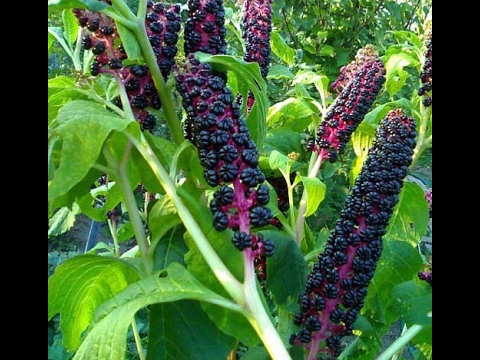

Watch this video on YouTube
Lakonos care
Lakonos is distinguished by its unpretentiousness, however, in the first few years of growth, it still needs to be paid attention. But when the bush gets stronger, it can grow without your help.
Watering
It is necessary to water the shrub immediately after the topsoil dries out. At the same time, pay attention to the fact that it reacts extremely negatively both to stagnant liquid in the soil and to drought.
Fertilizer
A mature plant with a developed rhizome does not need feeding. Its roots penetrate into the deep layers of the soil, where they can find the nutrients necessary for the plant. However, during the first two years of growth, the bush needs systematic feeding. From spring to the beginning of the autumn period, the plant is fed 1 time in 2 weeks, using mullein infusion for this.
Pruning
This shrub does not need formative pruning, as it is able to form its own crown. However, when preparing a plant for wintering, it is imperative to cut off its stems. If the variety is vigorous, then it will need support.
Wintering
In regions with a mild and warm climate, the roots of the lakonos can overwinter without shelter. However, young bushes need shelter, and cut off plants also cover if the winter in the region is frosty and with little snow. For this, the site is covered with a thick layer of loose leaves or peat.
Reproduction
This plant can be propagated by dividing the bush and using the seed method. Seeds are collected from September to October, and they are sown immediately in open ground. In spring time, friendly shoots will appear. For reproduction by division, only those bushes that are less than five years old are suitable, and this procedure is carried out in the spring. The fact is that you simply cannot dig up the overgrown rhizome of an older bush without injuring it, and it will be extremely difficult to divide it.
Types of lakonos with photos
In natural conditions, you can meet a little more than 20 species of lakonos. However, only 3 species are grown in the garden plots.
American Lakonos (Phytolacca decandra)
This vigorous shrub has a rounded shape and reaches a height of about 300 centimeters. The length of the greenish foliage is up to 40 centimeters. The bush blooms in June, while flowering ends only in September. Erect inflorescences have a light light green hue. Ripening of black-purple fruits is observed in the first autumn weeks. The shoots and roots contain poison, but they also have healing properties. In this regard, they must be used with great care. This species is propagated vegetatively and by seeds.
Lakonos berry or grape (Phytolacca acinosa)
The dark foliage of this species has a more pointed shape. At the same time, the berries of this shrub are outwardly similar to blackberries. Dense inflorescences are pink. The roots and fruits of such a plant contain poison. And young foliage and stems in Asian countries are used for cooking.
Lakonos claviferous, or multi-stalk (Phytolacca polyandra)
The stems of this species reach about 100 centimeters in length. They are decorated with pink inflorescences and not so large foliage.
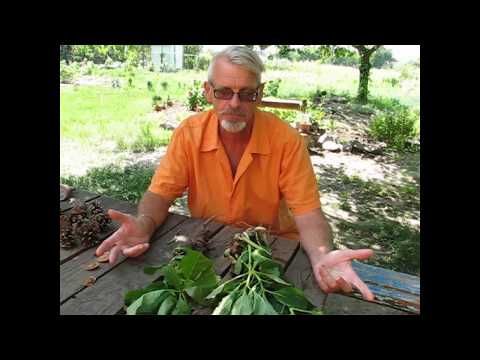

Watch this video on YouTube

